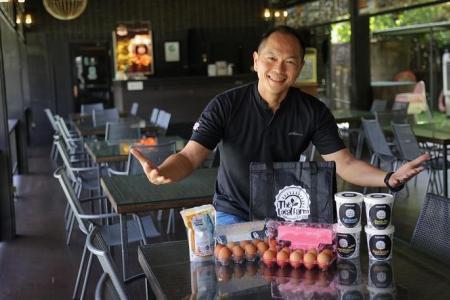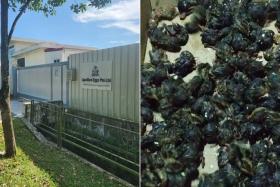Farmers face hurdles in push to boost food security
Warm up a packet of assam mullet chowder for a quick dinner after work, or simply dig into a tub of kale and coconut gelato.
These are some fuss-free meals or quick snacks made from farm-fresh products in Singapore.
Former Kranji Countryside Association president Kenny Eng, 49, said farmers here are serious about treating the industry “not just as an economic engine but also one with potential for innovation and lifestyle transformation”.
“We adopt this new approach – one that has a more rounded development trajectory – so that the local agricultural industry remains relevant in the future,” he added.
According to the inaugural Singapore Food Statistics report released in April 2022, there are an estimated 260 land- and sea-based farms here.
The Government has set its “30 by 30” goal of ensuring that 30 per cent of local food needs can be met from domestic production by 2030.
A masterplan has been rolled out to turn Lim Chu Kang into a high-tech, sprawling district producing leafy vegetables, mushrooms and fish in a climate-resilient, energy-efficient way.
Some options include a “stacked farm approach” to intensify land use, growing produce in underground caverns to guard against rising sea levels, and using solar panels in greenhouses to harness renewable energy.
Mr Eng, who is director of horticultural business at Nyee Phoe Group, feels that working with food-processing companies is the way forward. Its own Gardenasia brand has come up with The Local Farm’s (TLF) range of ready-to-eat and ready-to-cook products made with fresh produce from farms here.
TLF by Gardenasia has also created a platform to engage change-makers and thought leaders to challenge mindsets and explore various perspectives on important issues that impact the local farming community, Mr Eng added.
“Products like Egg Story’s Dashimaki Tamago, The Soup Spoon’s Assam Mullet Fish Chowder and Papitto Gelato include flavours such as arugula oat, kale coconut, pineapple baby spinach and even round spinach, which add value to farmers’ efforts, while at the same time make it easier for consumers to support local producers,” he said, noting the offerings from other industry players.
Still, the road to a higher-tech food industry is not a smooth one, amid other competing needs for land, and there have been dropouts, with Mr Eng warning that “if there are no farmers, there is no food”.
Several farmers, some of whom have families that have been in the trade for generations in Lim Chu Kang and Kranji, for between 25 and 70 years, have quit.
Some had to return land that was slated for military use, while others bowed out, conceding to high-tech, highly productive and resource-efficient farms.
In October 2021, the Singapore Food Agency (SFA) said about 390ha of the land in Lim Chu Kang would be redeveloped under a masterplan to create a “high-tech, highly productive and resource-efficient agri-food cluster”. Together with other efforts, such as tapping more sources for food imports, it would create a buffer against global supply shocks.
SFA said then that a high-tech vegetable farm has the potential to yield more than 1,000 tonnes of produce per hectare every year, compared with 130 tonnes of vegetables per hectare every year from an average farm which occupies around 2ha of land.
Get The New Paper on your phone with the free TNP app. Download from the Apple App Store or Google Play Store now


